
7 minute read
HowActive Will Your Antarctic Experience Be?
At left, cross-country skiing on the fast ice in the early season, if conditions permit. Opposite: A chinstrap penguin greeting committee.
How Active Will Your Antarctica Experience Be?
Antarctica is a place of extraordinary natural beauty. Someone traveling there on a 2,500-guest ship can enjoy a glimpse of the same scenery as guests aboard nimble expedition ships, but most else would be lost. Because Antarctica is not mere scenery, it is a place to be experienced, an ecosystem that delights upon closer inspection. It seems obvious that the experiences of a guest on an agile, 126-guest or 148-guest ship, with the outdoors instantly accessible, and a guest on a huge cruise ship requiring elevators to reach viewing decks would be too different to compare. However, there are equally significant differences between traveling with a dedicated expedition company and other small ship operators. Investigate how engaged you will be able to be, what you’ll be able to do, and how often.
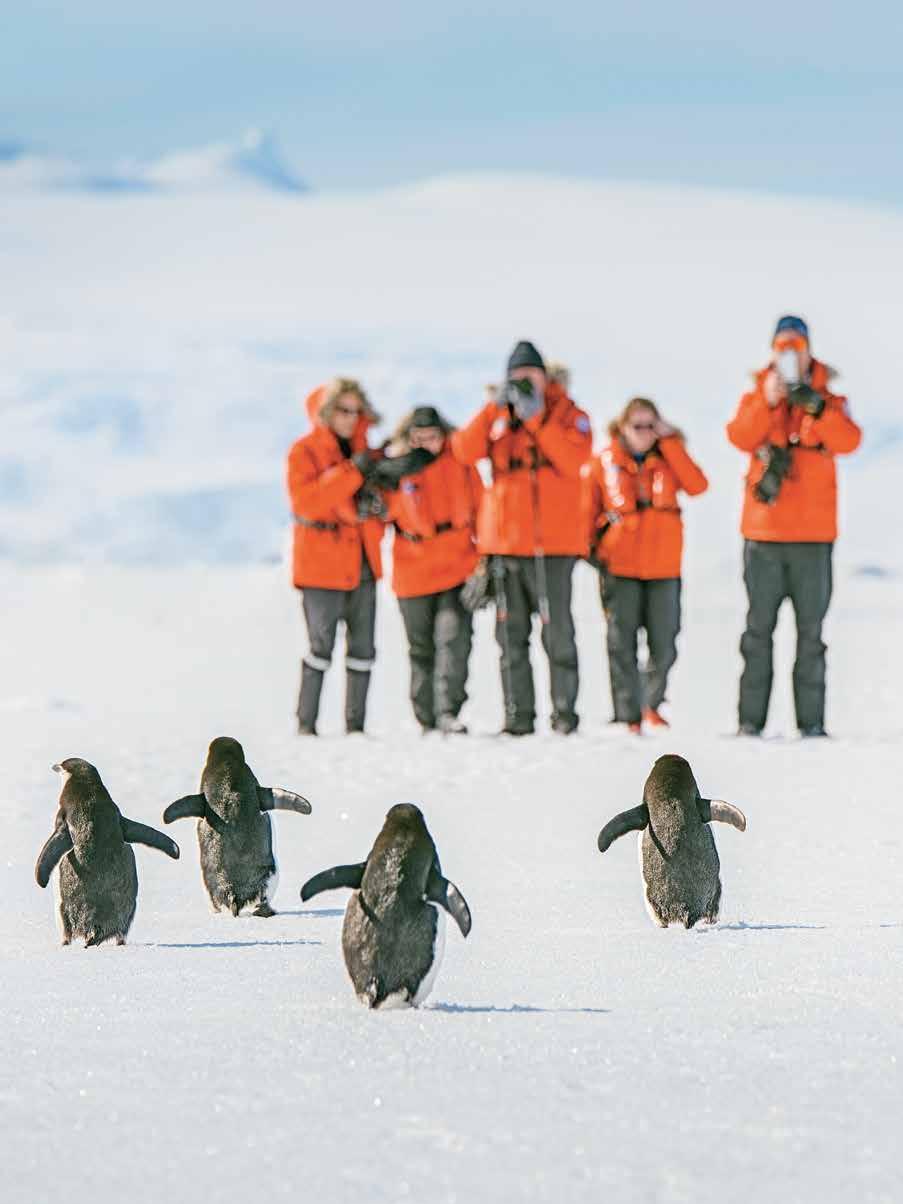

One could have a perfectly wonderful time in Antarctica seated in a deck chair with a pair of good binoculars. But genuine encounters with beauty, wildness, and the seldom seen are the difference between wonderful and extraordinary. The Lindblad-National Geographic fleet ships travel with meaningful tools for that reason: to enable extraordinary upclose and personal experiences. Ask yourself if you’re willing to settle for seeing Antarctica from a window, or even from an outside deck, when it is possible, by choosing your operator wisely, to get out and explore. To inhabit the magnificent vastness. Hear the silence. Have leisurely encounters with penguins—without being forced to leave because others are waiting their turn. Walk, hike, climb. Try a polar plunge if you’re inclined (and many are). Learn about the geology, the climate forces. And see beneath the sea.
Equipment
The following is a list of the equipment capable of transforming your experience of Antarctica to a personal encounter with the wildlife, geology, and fantastic varieties of ice in this astonishing ecosystem.
ZODIACS AND ZODIAC DEPLOYMENT SYSTEM Zodiacs are key to your ability to get out and about on explorations, so the quality of your experience will suffer without the ability to make landfall and explore that Zodiacs provide. However, having Zodiacs is not enough— deployment is an important factor too—since waiting in line in the tender area is not adventure-enhancing. The Lindblad-National Geographic ships each carry a fleet of 11-13 Zodiacs, depending on guest count. But more importantly, the ships are designed for swift deployment. In fact, Zodiac deployment can begin even before the ship drops anchor. As a result, there is virtually no wait time in the tender area, and more time ashore engaged in activities. Efficiently designed loading bays on each vessel make embarking and disembarking a Zodiac safe and simple for people of all fitness levels.

KAYAKS Lindblad Expeditions pioneered sea kayaking from expedition ships in polar waters, to provide guests with unprecedented opportunities for profoundly personal and exhilarating explorations in “penguin country.” Considerable time and safety testing was involved in vetting the idea of polar kayaking, before the company’s veteran expedition leaders and Captains gave the idea a “green light.” Now each ship is equipped with a fleet of 24 to 36 stable double kayaks, not a token number, enough so everyone interested can paddle. In addition to being innovative about “personal” polar exploration, Lindblad has invented ingenious deployment protocol, designed and manufactured by the company’s engineering team. It’s a proprietary staging platform that enables the expedition team to deploy guests in kayaks in ideal locations—again, without even waiting for the ship to drop anchor. While other travel companies have copied the kayaking idea, not all do it, so if a genuinely exploratory experience matters to you, check for this feature—and how swiftly they deploy to get you out exploring, without reliance on beaches, docks, or other infrastructure.

CROSS-COUNTRY SKIS & SNOWSHOES November is known as the early season. It often provides optimal conditions for parking the ship in the fast ice (see photo on page 6). If ice conditions permit, we take the opportunity to descend on to the fast ice with crosscountry skis or snowshoes, exploring this unique aspect of Antarctica’s thrilling vastness.

Helicopters: Much Ado About Nothing, or Valuable? There is a trend currently among some Antarctica cruise operators to equip their ship with helicopters. This is likely quite good for marketing as it is attention-grabbing. Whether it adds to the guests’ experience is debatable. Lindblad has carefully researched the prospect and decided against it. The company believes helicopters are disruptive to the wildlife, and to the quality of the silence that is so fundamental to the authentic Antarctic experience. Accommodating the number of guests potentially interested in the excursions would require continuous noisy shuttling in the case of helicopters, and only a small subset of the guests could be served, while the remainder might be disadvantaged.
Far from cold, gray and lifeless, the polar sea is vibrant, colorful and remarkably full of life. Inspired by Jacques Cousteau, LindbladNational Geographic is the only travel company operating in Antarctica with an extensive undersea program. Key to the program is employing an undersea specialist—he or she dons layers of dive gear, including an insulating dry-suit, plus an array of video tech in order to remain below long enough to capture HD video of the vivid life within these frigid waters.
As a result, Lindblad-National Geographic travelers can explore the polar ocean, sitting in the warmth of the ships’ lounges. Seeing fish with anti-freeze in their blood, or swimming, plant-like crinoids—can fundamentally change the way travelers view the ocean. Some of the animals the undersea specialists have recorded on expeditions, like a large-scale worm discovered in the Weddell Sea, are so rare or unusual that even Antarctic biologists can’t identify them. Lindblad-National Geographic ships also voyage with ROVs able to operate up to 1,000 feet below the surface, far below what any human diver can reach. Often when Lindblad specialists deploy the ROV, it is filming areas no one has ever seen before.
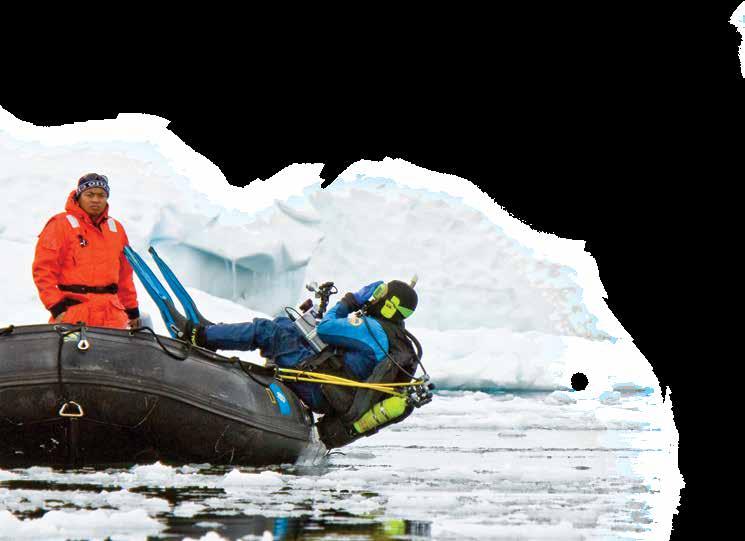
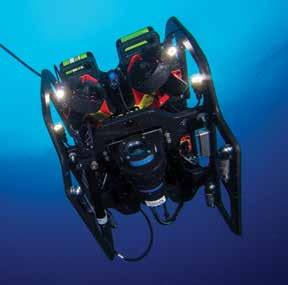
Lindblad ships also act as platforms for scientists to conduct research. From taking DNA samples from Antarctic killer whales to enabling James Balog to set his Extreme Ice Survey cameras on Antarctic and South Georgia’s glaciers, Lindblad-National Geographic is reconceiving the vital role expedition ships, and the intelligent, curious travelers aboard can play in advancing polar science.
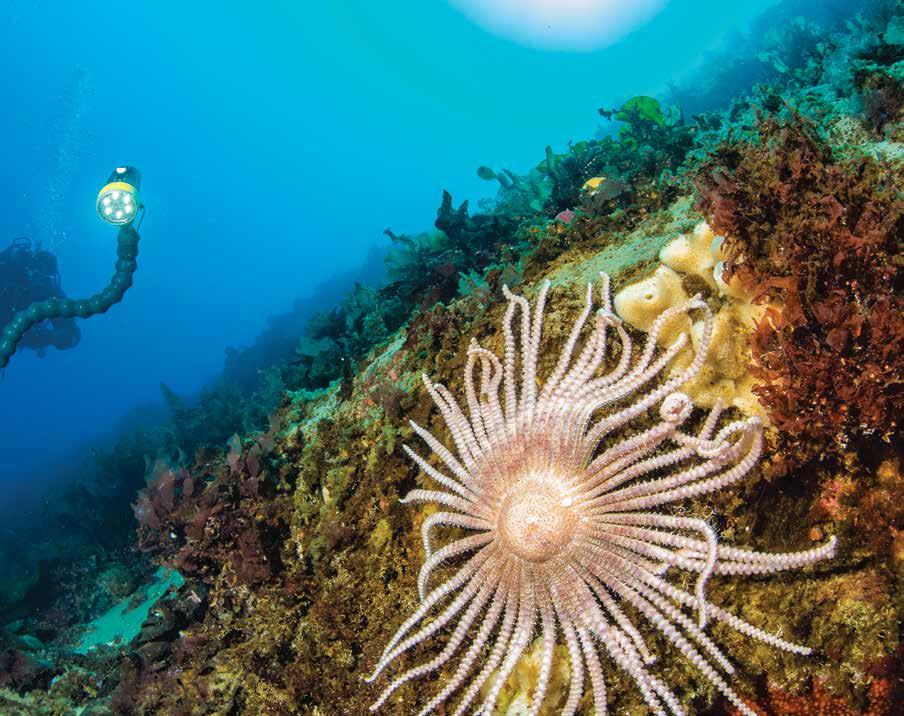

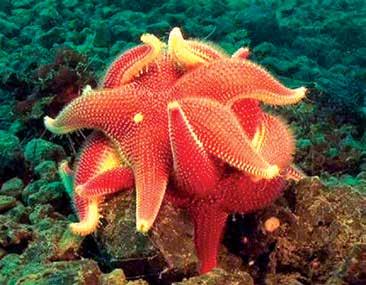
Undersea specialist geared up for a polar dive, and launching from a Zodiac. The images from his or her video forays will later reveal the undersea to guests. Above: Images captured by the Remotely Operated Vehicle (ROV): anemone, seastar.
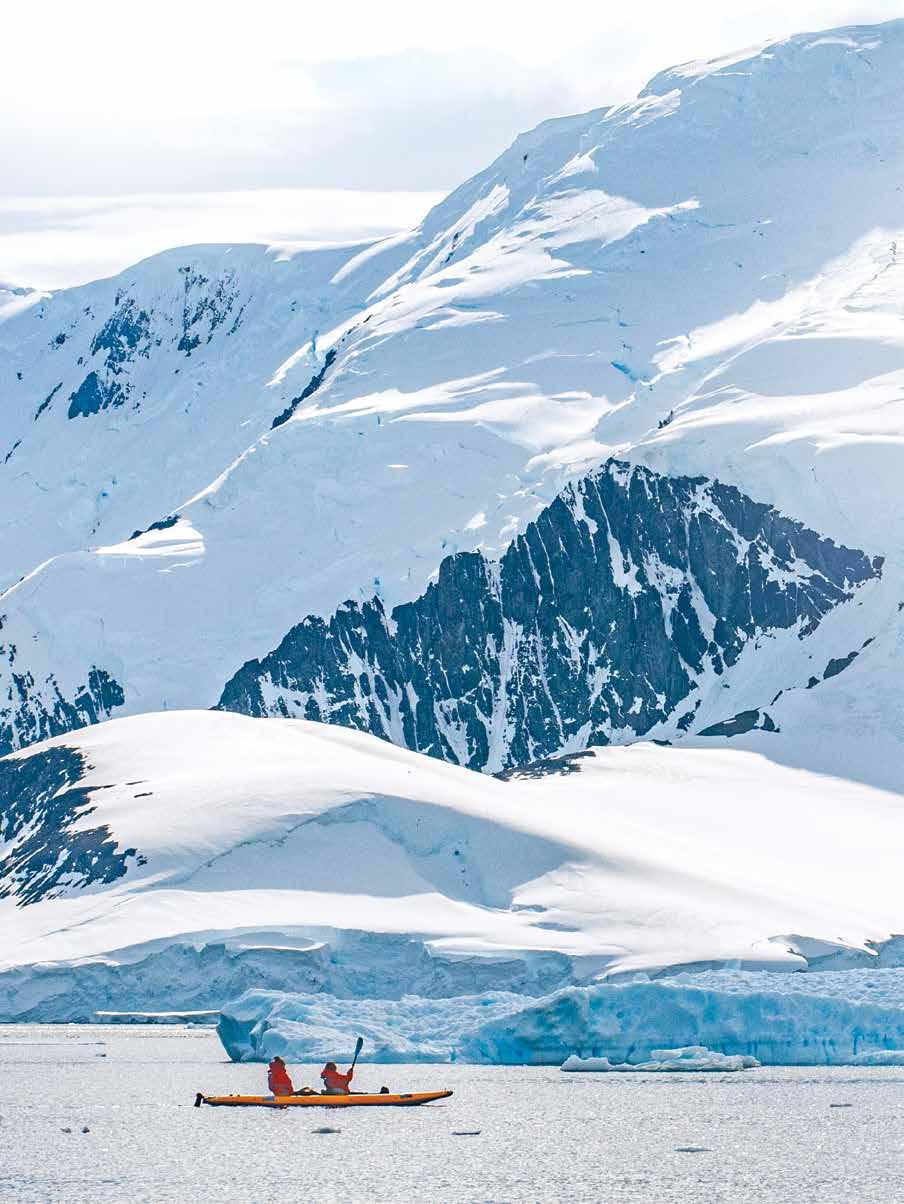
While any cruise to Antarctica is planned months in advance, an authentic expedition specialist, Lindblad-National Geographic, has the experience and flexibility to take best advantage of varying ice and weather conditions to make landings and activities dependent on hour-by-hour evaluations. Lindblad has the experience and most importantly a uniquely collaborative culture to make the most of prevailing conditions. Lindblad Captains and expedition leaders play a vital role in creating the entire experience. Their camaraderie and team spirit, as well as their knowledge and skill, play a big role in defining the number and nature of guest activities. The contribution of the Hotel Manager and crew is huge, as well. If wildlife is spotted at dinner time, the meal is held—to enable an extraordinary experience—but still delicious when guests return to table. Flexibility means having the ability to change plans, not only when conditions
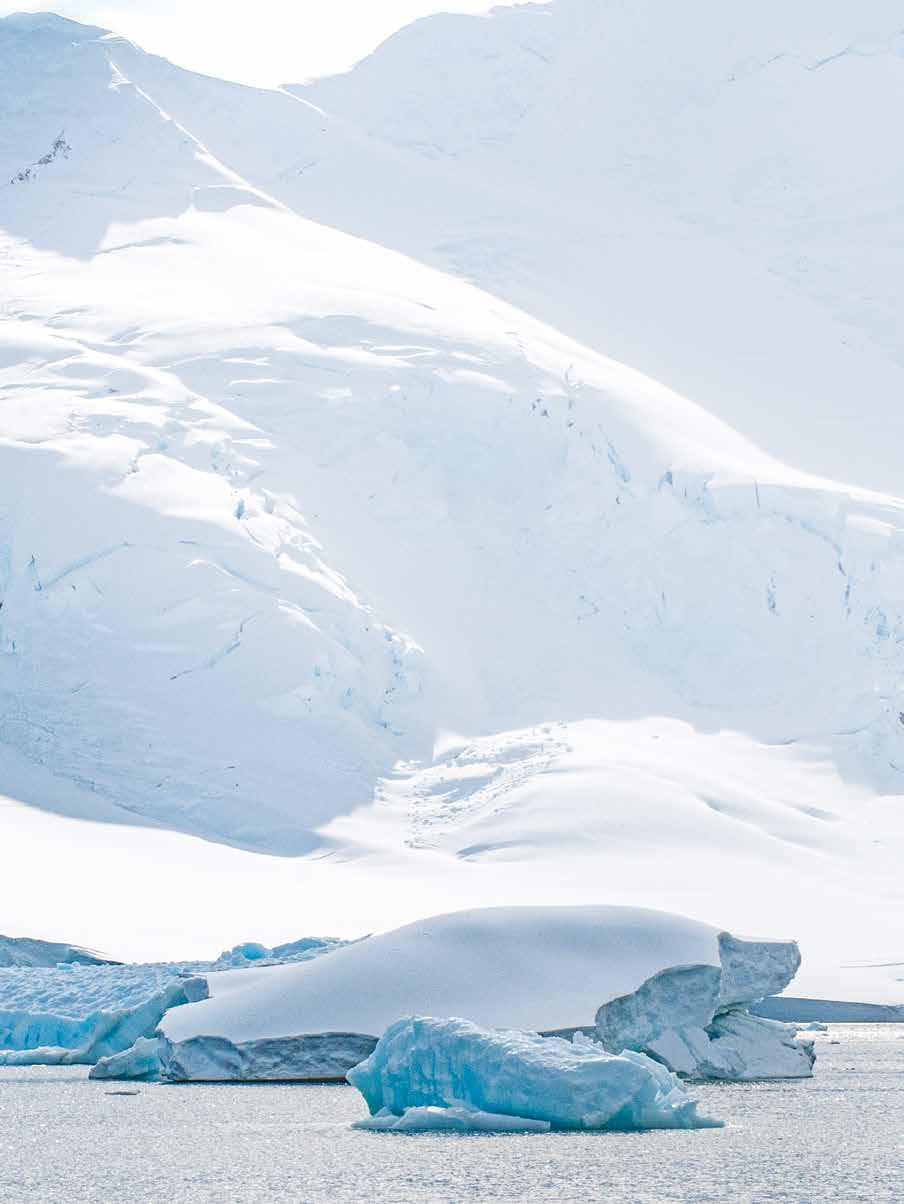
warrant, but also when desired—and Lindblad’s unrivaled team cooperation benefits the traveler. After all, most often, it is the unplanned, unexpected wildlife encounters—a 40-ton humpback whale surfacing directly ahead of the ship, the thrilling sight of a pod of killer whales hunting a seal, or lingering to photograph a fierce leopard seal—that makes for the most indelible memories.
Experience over time gives Lindblad Expeditions the ability to deliver more ambitious and wide-ranging itineraries. Because of the company’s deep knowledge of the Antarctic peninsula, and their unique ability to make the most of prevailing conditions and opportunities, travelers aboard are increasingly enjoying amazing and rare sightings of emperor penguins, either alone or in a small group on the ice. While not guaranteed, it can be a lifetime experience; as is the opportunity to achieve a record “furthest south.”







